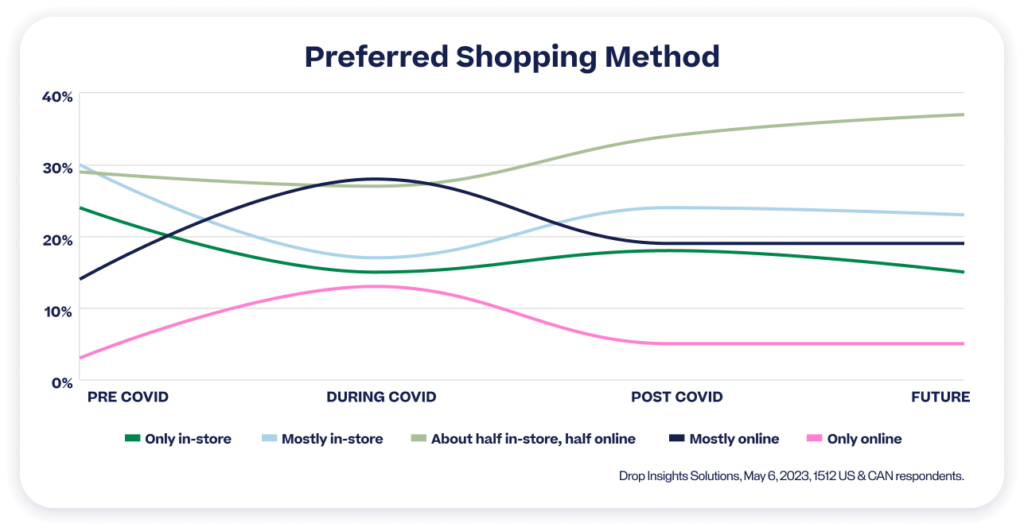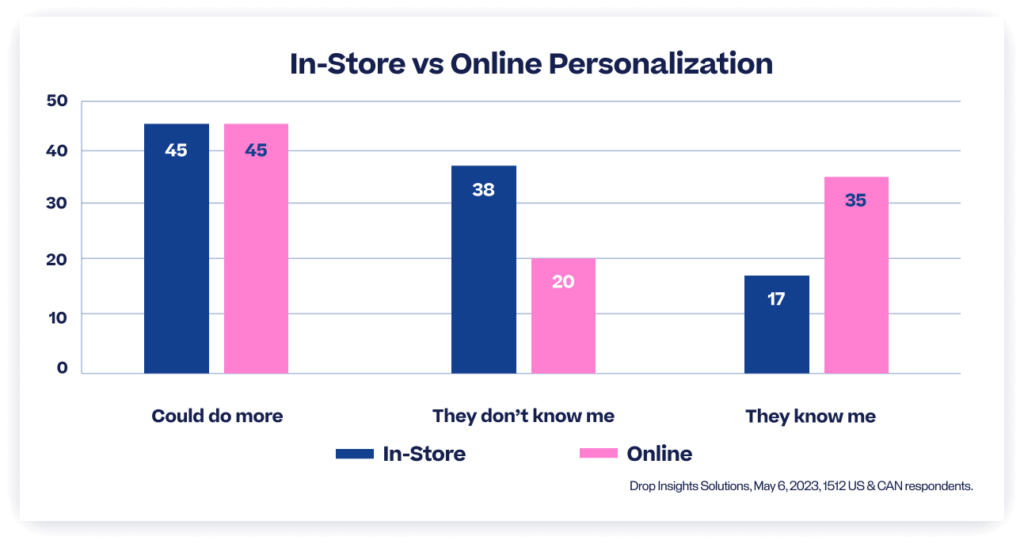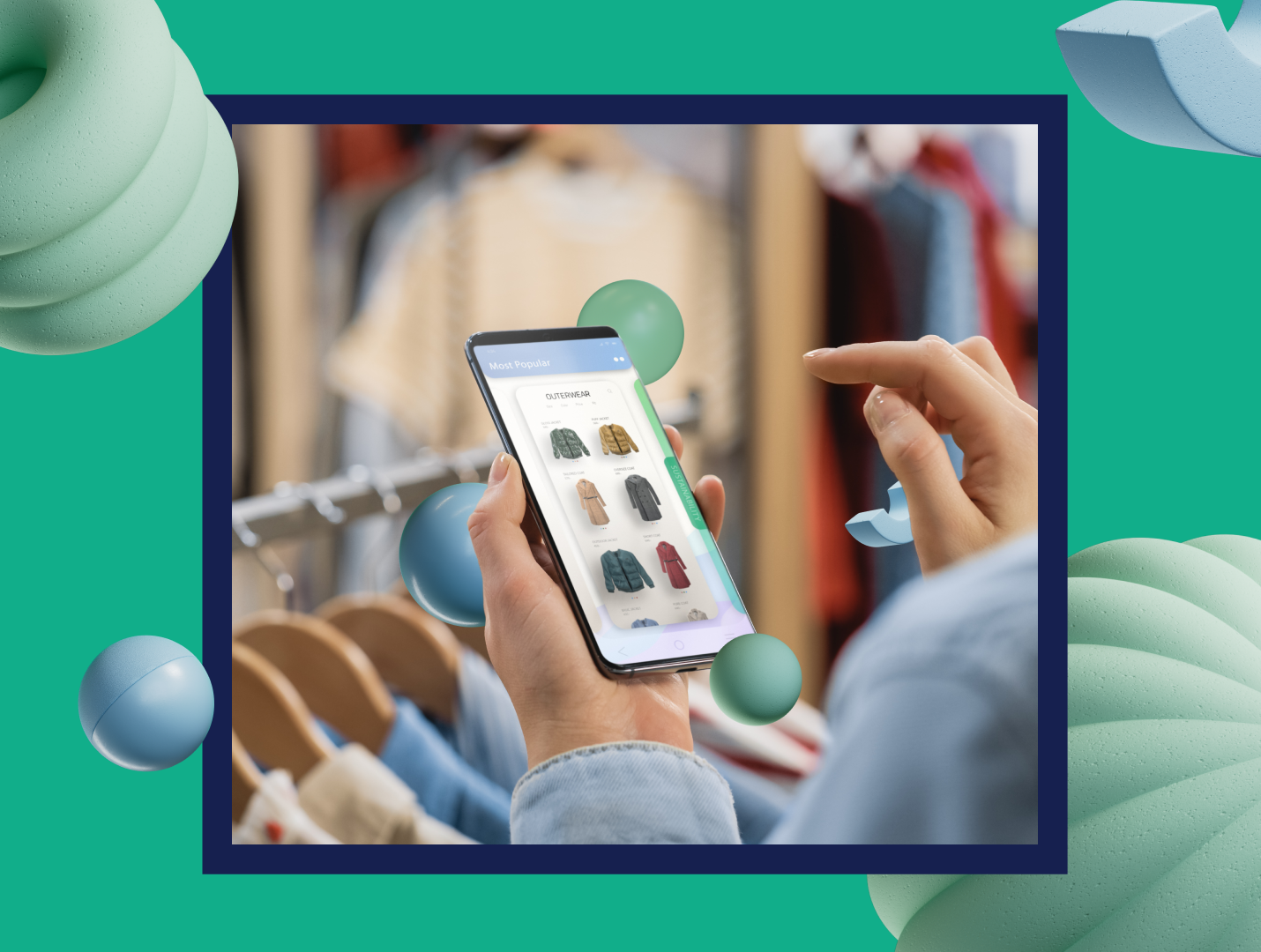The shopping landscape has undergone a significant transformation in recent years, catalyzed by the COVID-19 pandemic. What was once predominantly an in-store experience has now shifted to online platforms, and as we emerge from the pandemic, consumers are seeking a balance between the two. In this blog post, we will explore the changing shopping preferences and the growing importance of an omnichannel approach for organizations. Furthermore, we will discuss the unique advantages offered by both in-store and online shopping experiences, and how connecting the two can enhance customer satisfaction through personalization and consumer insights.

Shopping behavior has shifted from predominantly in-store pre-covid, to online during covid, and now a combination of both post-covid.
The majority of consumers preferred to shop in-store pre-covid (54%), and during the pandemic, there was a necessary shift to online with approximately 20% making the switch. Now that consumers are free to shop how they please post-covid, the split between in-store, online, and both is fairly equal. It is evident that this trend is here to stay, underscoring the need for organizations to adopt an omnichannel marketing approach.
With perks to shopping in-store and online that can’t be replicated by the other, consumers are getting the best of both worlds.
Most organizations have effectively created a good in-store and now also online shopping experience as a result of the pandemic. This is potentially a reason why consumer shopping preferences are more diverse. In-store, the ability to tangibly feel and try a product creates a confidence in the purchase which is hard to replicate online. Online, the ease of conveniently and seamlessly shopping anywhere, anytime, on any device is a feature that consumers have become accustomed to since the pandemic.

Connecting the in-person and online shopping experience is what consumers desire most.
Consumers are not looking for organizations to replicate the perks of in-store and online shopping within each other. Instead, the solution is to connect the two with an omnichannel marketing approach. Mobile phones are a great way to meet this need as stronger online personalization can be brought to the in-store experience. Reminding in-store shoppers of the products they have viewed online, and presenting the exact item location within the store through mobile phones is one example of how this could be executed.

Meeting consumer preferences through omnichannel personalization.
The majority of consumers like personalized recommendations as long as they are relevant and think more can be done within this space, especially in-store. Organizations have an opportunity to enhance the in-store shopping experience by leveraging the power of data and technology. By understanding customer preferences and purchase history through consumer intelligence, organizations can offer tailored recommendations, exclusive promotions like card-linked offers, and personalized assistance, thereby enriching the in-store experience and fostering customer loyalty.
As shopping behavior continues to evolve, organizations must adapt and embrace an omnichannel approach to cater to diverse consumer preferences. The combination of in-store and online shopping experiences provides consumers with the best of both worlds, and by connecting these channels seamlessly, organizations can deliver personalized and engaging customer journeys. The future of retail lies in understanding consumer preferences and leveraging technology, customer intelligence, and consumer insights to create unique and memorable shopping experiences. By embracing an omnichannel strategy, organizations can thrive in this new era of shopping and build enduring relationships with their customers.
Ready to go into the data? Unlock the potential of omnichannel marketing in retail by gaining exclusive insights and strategies with our presentation from RetailTO. Download our comprehensive presentation on data-driven omnichannel marketing now.
Download the full Omnichannel Presentation
This site is protected by reCAPTCHA and the Google Privacy Policy and Terms of Service apply.


